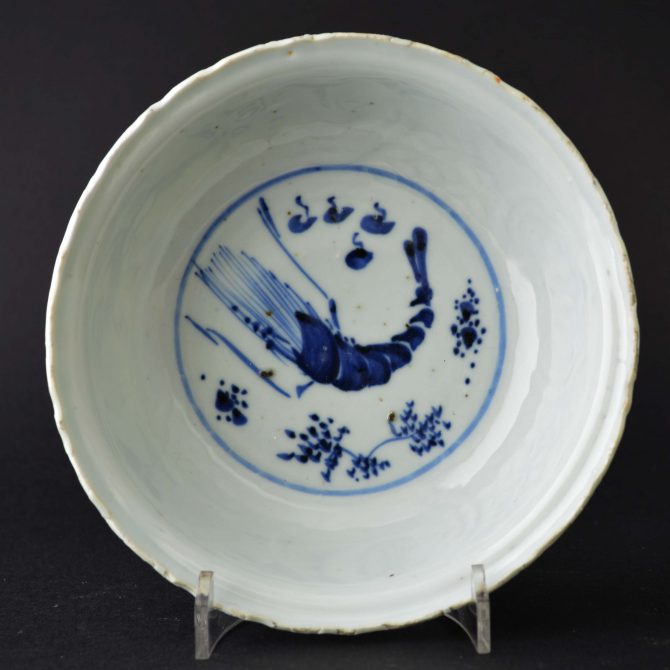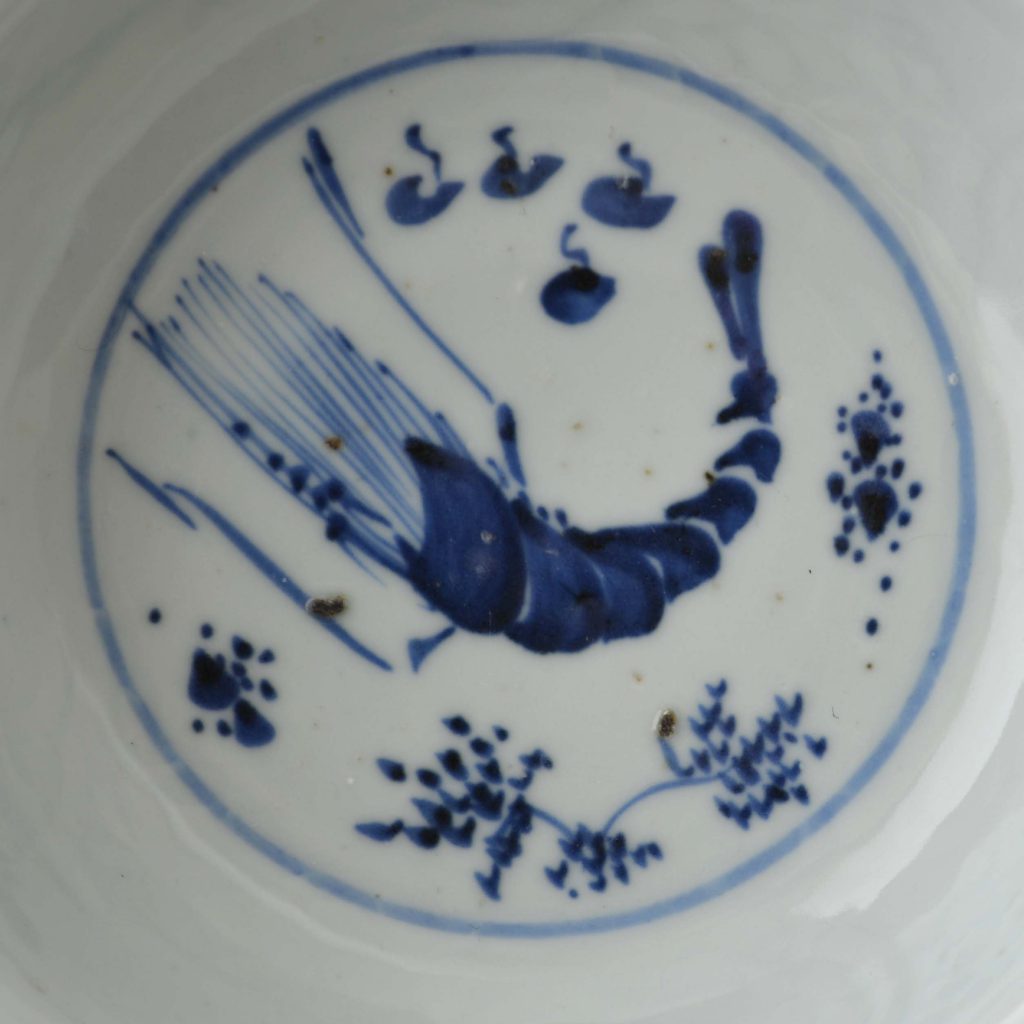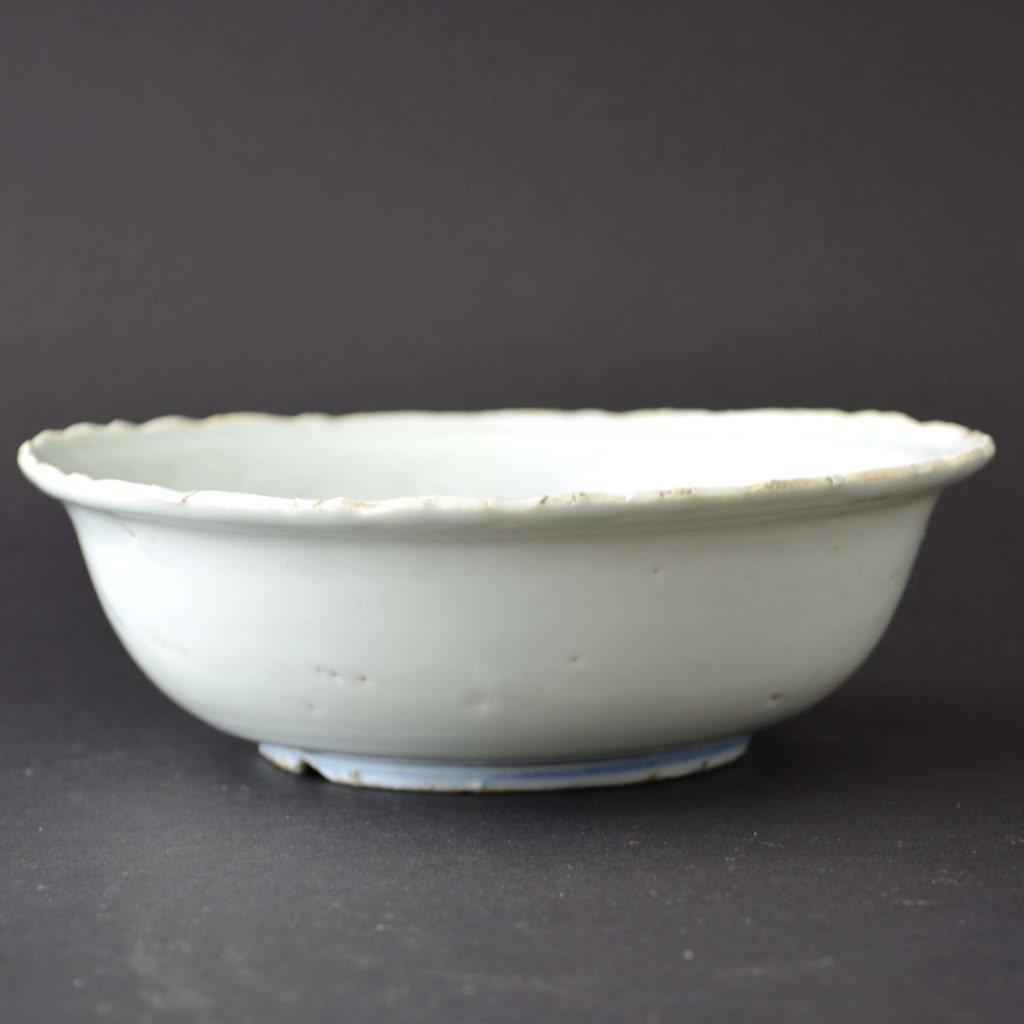
A Late Ming Ko-Sometsuke Bowl
A Ming Blue and White Ko-Sometsuke porcelain bowl, Transitional period, Tianqi or Chongzhen c.1625-1640. The steep sided but shallow porcelain bowl has a moulded border in the Kraak style and is decorated with a shrimp or prawn among aquatic plants to the well. The term used for Ming blue and white porcelain for the Japanese Tea Ceremony is Ko-Sometsuke which means old blue and white.
SOLD
- Condition
- In good condition with typical fritting to the rim.
- Size
- Diameter : 14 cm (5 1/2 inches)
- Provenance
- Old typed label to the base "5 1436, Blue & White, Ming Bowl c.1500".
- Stock number
- 24663
Information
Ko-Sometsuke
Ko-Sometsuke, meaning `Old Blue and White` is a term used to describe Chinese blue and white porcelain made for Japan. This late Ming porcelain was made from the Wanli period (1573-1620) and ended in the Chongzhen period (1628-1644), the main period of production being the 1620`2 and 1630`s. The porcelain objects produced were made especially for the Japanese market, both the shapes and the designs were tailored to Japanese taste, the production process too allowed for Japanese aesthetics to be included in the finished object. Its seams firing faults were added, repaired tears in the leather-hard body were too frequent to not, in some cases, be deliberate. These imperfections as well as the fritting Mushikui (insect-nibbled) rims and kiln grit on the footrims all added to the Japanese aesthetic. The shapes created were often expressly made for the Japanese tea ceremony meal, the Kaiseki, small dishes for serving food at the tea ceremony are the most commonly encountered form. Designs, presumably taken from Japanese drawings sent to China, are very varied, often using large amount of the white porcelain contrasting well with the asymmetry of the design.
A Related Transitional Dish from the Hatcher Cargo c.1643


